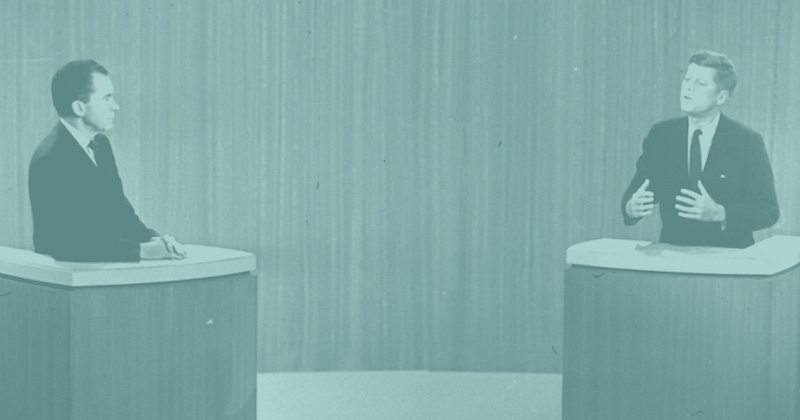The Power of Presence
Episode #3 of the course The secrets of body language by Vanessa Van Edwards
The presidential election of 1960 changed history.
John F. Kennedy and Richard Nixon squared off in the first-ever televised presidential debate. While both candidates had strong talking points and good ideas, one of them reigned supreme.
Before I reveal the winner, take a look for yourself:
Who gets your vote?
John F. Kennedy not only won this debate, but he also went on to be elected to the highest office in the country: president of the United States.
Now, here’s where it gets interesting.
Anyone who watched the debate on television was sure that Kennedy had won. But anyone who had simply listened to the debate on the radio was sure that Nixon had won. This prompts the question:
Did body language have something to do with the outcome?
I want us to take a look at the first 30 seconds of the debate. Go back and rewatch one more time. Write down everything you notice: a weird facial expression, a gesture, a nod—anything that stands out to you for both candidates.
Here are the cues we picked up:
Nixon:
• In runner stance (looks like he wants to leave)
• Hand resting on leg (self-soothing)
• Other hand clutching chair and looks like a fist (anger)
• Looking at Kennedy (alpha cue)
• Slight lean back (distancing)
• Jerky nod and movement upon introduction
• Almost a bow as he nods
• Mouth self-soothing (at around 0:31 smacking mouth—potential dry mouth)
• Slight gulping for air
• Lots of odd facial tics and movement
• Rubs one of his hands with the other (self-soothing)
• Grimace/fake happiness after introduction
• Higher blink rate
• Has all buttons of his jacket buttoned
Kennedy:
• Upright posture
• Eye gaze at audience/camera
• Still (very little movement, and if he does move, it is slow and even)
• Almost no facial movement
• Slight scan of audience (smooth, slow head movement scan)
• Loosely crossed legs (slight blocking)
• Hands resting on lap (slight blocking)
• Slow, even nod in the affirmative upon introduction
• Chest, chin, forehead up and out
• Hands resting calmly
• No smile at introduction (alpha)
• Slight nod at introduction (almost encourages the audience to agree with him)
• Bottom foot planted and pointed toward the audience/camera
• Slow blink rate
• Jacket is unbuttoned (can see more of his chest)
The reason Kennedy won the debate and ultimately the presidency is because he had a little something called presence. Presence is powerful—it’s a combination of self-awareness, confidence, and security. Often, it’s a completely unspoken trait; sometimes, it’s more of a feeling that you get when you’re around someone.
Take a moment to think about your personal presence.
In one word, how do you think you come across? ______________________
In one word, how do you want to come across? ______________________
Successful and impactful presence is about communicating and presenting ourselves in an authentic way. I want to help you achieve the type of presence that’s memorable.
Challenge: What’s your presence, and what do you want it to be?
Best,
Vanessa
P.S. Tomorrow, I’ll teach you how to look like and feel like a winner. Stay tuned!
Recommended book
“Emotions Revealed: Understanding Faces and Feelings” by Paul Ekman
Share with friends

